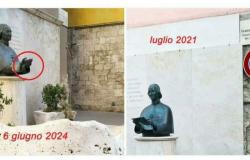An alarm went off in the night between Sunday 16th June and Monday 17th for fans of the Game of Thrones: the long-awaited second season of has landed exclusively on Sky Atlantic (and streaming on Now). House of the Dragon, the prequel to the highly successful saga by George RR Martin. Tonight, the highly anticipated new episode. «It doesn’t matter how many things I invented. There are things that happened in history that are just as bloody, or worse,” the author said. And the internal conflict that affects the Targaryen dynasty, at the center of the episodes of this new chapter, seems to have been inspired by a true story: the one featuring Matilda, daughter of Henry I of England and empress of the Holy Roman Empire since 1114 to 1125.
The second season
The fire-breathing dragons may be exquisitely invented creatures, but the struggle for power (which is, in fact, the beating heart of the fantastic hemisphere of the saga) has very specific historical references. We left the protagonists of HOTD dealing with the crisis following the death of the old king Viserys I: the main heir, Rhaenyra (Emma D’Arcy), has to deal with the king’s three children, her half-brothers born from the second marriage of sovereign. The clash gives rise to a bloody civil war, whose prize money is none other than the Throne of the Seven Kingdoms. A script that will give historians something déjà vuespecially if they delved into 12th century England.
History
At the time there was no King Viserys, but Henry I. As perceptive as he was unscrupulous, he also went down in history for his prolific activity as an amateur, which had led to the birth of over 25 children (according to experts’ estimates). The legitimate ones, however, were only two. Guglielmo, known as Adelin, and Matilda. The former, needless to say, should have been the natural heir to the throne, and everything seemed to proceed smoothly towards this outcome. The plans, however, were upset one night in the winter of 1120. November 25th, to be precise: William was traveling aboard the White Ship, together with around 140 nobles and a generous supply of wine. The passengers, perhaps driven by the alcohol they had ingested, started a speed race against the ship on which the king was travelling.
The death of William
The attempt ended in tragedy: the boat hit some submerged rocks and sank. According to what was later said, Guglielmo could have saved himself: he had reached a lifeboat, but turned back after hearing the cries of his half-sister, Matilda. The young woman survived, the prince found her grave at the bottom of the sea. When the king found out, the chronicles say, he fell on his face, began to cry uncontrollably and tore his beard. A few years later, the period known to history as “Anarchy” began.
Empress Matilda
Like the character of Rhaenyra, Matilda was brilliant. While still a child, she was betrothed to the Holy Roman Emperor: as a teenager, she governed Italy on her behalf. Her abilities and her blue blood, however, did not compensate in the eyes of the ruling class of her time for her greatest disadvantage: that of being a woman. For this reason, when her father died of poisoning in 1135, she saw her throne taken away by her cousin, Stephen of Blois. Who wore the crown until 1154, but without ever managing to truly reign: her royal authority was fragmentary at best and in some areas of the country totally absent.
The struggle for power
Matilda took possession of the South West of England, including a good part of the Thames Valley, while Stephen remained in control of the South East. The rest ended up being fed to the rebel barons. Looting, battles, blackmail and sieges became everyday life. Contemporaries documented a barbaric collapse of law and morality: the annals of the Anglo-Saxon Chronicle speak of a period in which “Christ and his saints seemed to sleep.” Among the common practices, for example, there was that of leaving prisoners in the sun sprinkled with honey, to make them attack by insects. Mercenaries like Robert FitzHubert delighted in witnessing the killing of “monks who burned along with their churches.”
The epilogue
The historian Henry of Huntingdon described in detail the atrocities of the Scots, who took advantage of the chaos and invaded the north of England: “They disemboweled pregnant women, threw children on the tips of their spears, massacred priests on the altars.” The bloody rift that characterized Stephen’s reign went down in history as the “War of the Cousins”. Or, precisely, “Anarchy”. His epilogue came only when Stephen agreed to recognize Matilda’s son, called Henry in honor of his grandfather, as the legitimate heir. In return, he asked for and received peace. A long period of reconstruction began after nearly twenty years of a civil war so brutal that it continues to provide material for writers even a millennium later.






